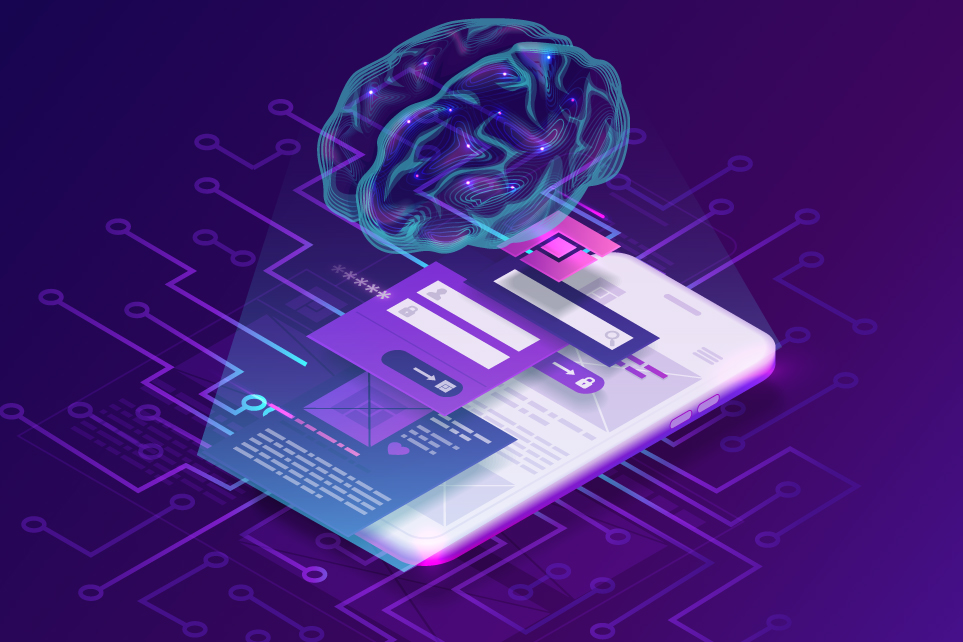Today, every business sector and industry is incorporating artificial intelligence (AI) to automate processes, improve efficiency, and reduce costs, including the industry of digital transformation, which is using artificial intelligence specifically to improve the user experience.
It is safe to say that in a few ways, artificial intelligence, or machine learning (ML), and UX designers have somewhat similar functions. They gather data, analyse users’ interactions, and try to predict human behaviour.
“Advancements in artificial intelligence and machine-learning technology have made the development of enhanced user experiences possible.”
So let’s review some of the important ways in which artificial intelligence is transforming user experiences, what UX processes artificial intelligence can make more efficient and how artificial intelligence can help UX designers.
Thinner User Interfaces
Thinner user interfaces present fewer hindrances to users while navigating or exploring a website or an application. Using historical data, artificial intelligence can anticipate a user’s action or query and provide a possible solution or pertinent results. The development of AI technology has enabled products to better prioritize, predict and resolve the queries of users.
Automation
While many repetitive, mundane tasks aren’t important, they require human attention for their successful completion. Some examples of such tasks that artificial intelligence can automate include resizing images, making colour corrections, and cropping images.
AI developers have come up with intelligent technology solutions that can do all of these tasks without any human intervention—for example, Adobe’s stitch capability can identify patterns in images and help designers stitch them together.
Smarter & Modular Design Systems
A design system provides patterns, modules, and elements that together comprehend the design language of a product or brand. Salesforce, GE, Airbnb, Google, and many other companies have created design systems that UX designers can use to provide a consistent, well-designed user interface to their customers or users.
Integrating artificial intelligence into these systems makes it possible to gather and analyse metrics that help product teams to understand how each individual user interacts with the elements of a user interface. The better a design system can understand what’s working and what’s not, the more it can optimize its modules to deliver better UX outcomes.
Visual Effects
The visual effects innovation from AI developers has resulted in the development of many applications that use AI technology for human-face recognition, including Autodraw, Artisto, and Prisma. Plus, users can apply visual effects such as blur and shadow to images of human faces.
Enhancing UX Processes through Artificial Intelligence
“In the field of UX design, artificial intelligence, or machine learning, can now power UX processes ranging from the analysis of data to creating design deliverables.”
The primary reason for using artificial intelligence is reducing the need for human attention. Thus, UX designers can improve the UX design process and enhance the user experience in one go.
Data Analysis
Artificial intelligence can analyse large amounts of data to ascertain patterns and deliver meaningful UX research results. For example, an artificial intelligence could generate questionnaires to collect data from users, and then use that data for qualitative data analysis. (Artificial intelligence can also provide relevant responses to users who need to carry out qualitative data analyses.)
UX Design
Even though UX design is a creative stage of the product-development process, artificial intelligence can play a major role in design. You can leverage various algorithms that are based on historical patterns in user data to create flow diagrams.
Wireframing
Even with very little data, artificial intelligence can develop wireframes from a flowchart. Once an artificial intelligence understands the context and the flow, it can easily generate complete wireframes for an entire application. The UX designer need only customize or edit the wireframes to meet specific product requirements.
A/B Testing
Artificial intelligence can generate multiple variants of a UX design solution in preparation for A/B or multivariate testing, then determine which solution performs best.
How Artificial Intelligence Can Help UX Designers
Artificial intelligence can provide choices to UX designers and help them quickly make design decisions.
Artificial intelligence and machine learning have been helping developers and designers leverage automation in their product- and application-development projects for a long time. Let’s consider how.
Making Decisions
Artificial intelligence can provide choices to UX designers and help them quickly make design decisions. ML predictions are based on historical datasets and, by giving users the fewest potential choices; make their decision-making process easy and fast.
Bonding Between Humans and AI Systems
Voice assistants such as Siri and Alexa are perfect examples of Human-AI bonding. After obtaining and analysing large amounts of data from users, an artificial intelligence can reliably predict human behaviour, which helps the development of Human-AI bonding. UX designers can leverage Human-AI bonding to improve the user experience, throughout the application-development process.
Analysing Data Efficiently
UX designers design user interfaces—to a certain extent—on the basis of data analysis. If you gave the same task to an artificial intelligence, it could analyse huge amounts of data, then generate useful results. Any user experience would be better if it were designed after analysing oceans of data. Artificial intelligence can do this analysis for you in no time. Imagine how relevant the products you design and develop after analysing large amounts of user data would be to your users.
Delivering Value to Users
An AI-powered app focuses on satisfying the precise needs of users. Developers can program an artificial intelligence to deliver the best user experience and great outcomes. A product that delivers maximal value to your customers and users results in a profitable business.
Conclusion
The combination of artificial intelligence and UX design holds tremendous promise for the future. Therefore, it is the responsibility of both businesses and product developers to make optimal use of AI technologies that can increase the capabilities of products. We at AppleTech possess the expertise and experience in building AI powered UX Solutions for various industry sectors. Contact us, to get your idea see the light of the day!

